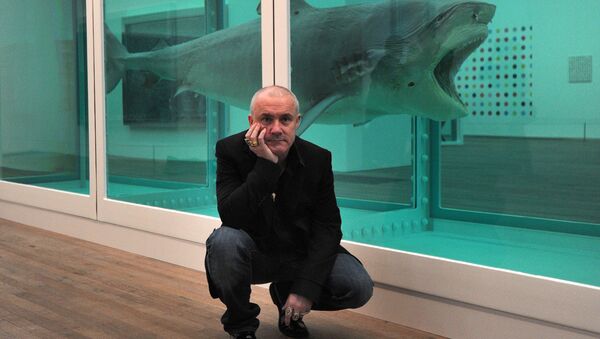Scientists conducting a study involving formaldehyde fume-sensing devices, found that some of Hirst's most recognizable works of art may actually be leaking toxic fumes.
The notorious pieces — comprised of suspended animal carcasses preserved in formaldehyde — include 'Some Comfort Gained from the Acceptance of the Inherent Lies in Everything', 'The Physical Impossibility of Death in the Mind of Someone Living' and 'Mother and Child Divided'.
Damien Hirst, Some comfort gained from the acceptance of the Inherent lies in everything. pic.twitter.com/YPijngXN9p
— oubli (@oubliable) November 22, 2013
The study — published in the Analytical Methods journal — concluded that a number of pieces by the famous artist appeared to be leaking formaldehyde gas, exceeding levels permitted by law:
"It has been found that the tanks are surrounded by [formaldehyde] fumes, constantly exuded in the atmosphere (likely via the sealant), reaching levels of 5 ppm, one order of magnitude higher than the 0.5 ppm limit set up by legislation."
Whilst normally present in the air at low levels — generally 0.03 ppm — formaldehyde can be traced to a number of sources, including cigarette smoke, gas stoves and kerosene heaters. Nevertheless, formaldehyde gas can cause skin irritation and breathing problems, and in the longer term it has been linked to some types of cancer.
Daily Animal Art 21. Damien Hirst #DamienHirst Mother and Child Divided (1993) #TurnerPrize #contemporaryart pic.twitter.com/Lju3fasBth
— Derek Curtis (@ArtcultDerek) December 8, 2015
The artist released a statement, in which he denied putting patrons at risk, saying:
"Our experts tell us at the levels reported by this journal, your eyes would be streaming and you would be in serious discomfort. No such complaints were made to us during the show."
Though unintentional on the part of the artist, this is not the first scandal to be associated with Damien Hirst; a piece consisting of a rotting cow and bull for example, was banned by officials in New York on public health grounds in the late 90s.
Hirst first emerged through the controversial "Young British Artists" group — alongside the likes of Tracey Emin and Marcus Harvey — prominent in the UK art scene during the 90s. According to the 2010 Sunday Times Rich List, his wealth was valued at US$310 million, making him the UK's richest living artist.


